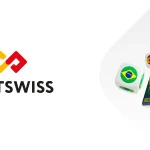Roulette wheels contain pockets (also called pockets with painted numbers), that must be balanced to ensure that the ball lands within one. In addition, certain bets require specific sectors on the layout for effective functioning – these are called “called bets”.
Understanding the European American and French roulette wheel layouts is integral to understanding the game; however, newcomers may find this process confusing.
French bets
A roulette wheel is designed in such a way to ensure its gameplay is as fair as possible, meaning pockets alternate between red and black and there are no consecutive runs of odd or even numbers; furthermore, low (1-18) numbers are distributed evenly with higher (19-36).
On the table layout are several betting options, such as inside bets (straight, split, street corner and line) as well as outside bets such as Dozen Column Red/Black Even/Odd High/Low High/Low French Call Bets.
As soon as the ball lands, the dealer collects losing bets and marks winning ones by pointing out winning numbers and colors and placing markers accordingly on the table. He then pays out winning bets using La Partage rule which reduces house edge by half but remains less of an issue given each bet is paid out according to odds of the game.
Odds of winning
Casino gambling is all about odds; even if you don’t win big, knowing how to beat the game could still net you some profit if you know its rules and how it operates can pay dividends in cash and prizes. That is why it is vital that players understand these fundamental aspects of gaming so as to maximize their odds of success and profitability.
To determine the winning number, a croupier spins a wheel with a ball around an inclined circular track in one direction until eventually losing momentum and falling into one of several compartments on the roulette wheel – each compartment carrying an increased likelihood of housing the winning number.
On a standard European wheel, there are 18 red pockets and 18 black pockets as well as one or two green house pockets, known as “house pockets.” The total number of pockets helps balance out bets placed outside on categories like red-black, odd-even, high-low etc.; thus ensuring that it is as fair as possible.
Betting options
The roulette wheel is an integral component of the game and features numbered pockets alternating red and black with two green ‘0’ and ’00’ pockets in European and American games. Its design ensures randomness and fairness on each spin, so understanding it can help you make better bets. A tracking board allows you to identify patterns in previous spins results as well.
The table is where bets can be placed, providing more extensive betting opportunities such as outside bets such as dozens and columns, which cover 12 numbers on the wheel for increased odds of success.
These bets are less likely to lose than individual-number bets and easier to place with the assistance of a croupier. Other outside bets include Voisins du Zero and Tiers du Cylindre which cover one third of the wheel respectively; additionally you may place a final 8 bet, covering four 14, 24 and 34 numbers on the wheel.
Variations
The key difference between European and American Roulette can be seen in its wheel layout. European roulette employs a standard 37-pocket wheel while its American equivalent includes an additional double zero pocket that alters distribution of black, red, even and odd numbers, giving the house more of an advantage than with European game’s special betting options known as ‘called bets” which cover portions of the wheel such as Voisins du zero, Tiers du Cylindres Orphelins and Finales bets – each providing different advantage than its American counterpart!
While both games feature different wheel and table layouts, both use the same betting layout for inside bets. Outside bets typically offer lower payouts but greater odds of success; players should be mindful of rules regarding them such as En Prison rule where an even money bet lands on zero and forfeits your stake – although manufacturers are continuously making improvements that reduce deceleration of the ball.












More Stories
Roulette Etiquette in Different Casino Environments: A Player’s Guide
Mathematical Analysis of Roulette Wheel Biases: The Cracks in the Perfect Machine
The Cultural Significance of Roulette in Different Societies